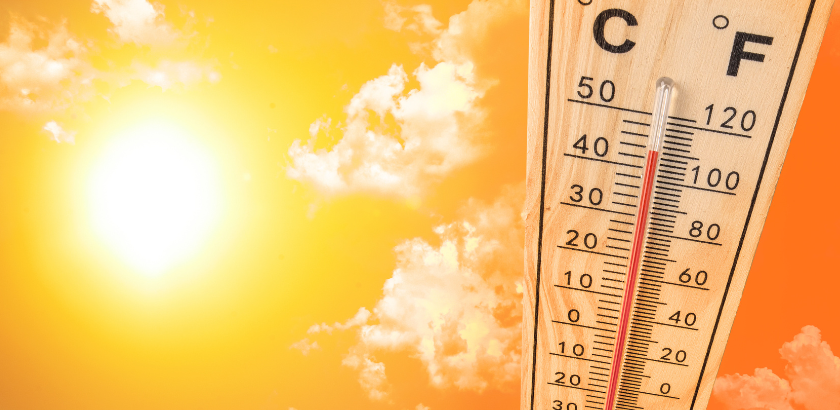Beat the Heat
This article is taken from the More in My Basket Blog.
Beat the Heat

Temperatures can reach the upper 80s, 90s and even higher in North Carolina during the summer months. The temperature plus humidity can easily send the heat index into the 100’s. Staying cool can be tough. During this time, it is important to limit outdoor activities especially if you’re not properly hydrated. While everyone is at risk during the summer months, special attention should be given vulnerable populations such as older adults and young children.
Fortunately, our body has a natural way of cooling itself. Through perspiration or sweating fluid is excreted through the skin that acts as a cooling agent to regulate body temperature within normal, healthy ranges.
Those exposed to high temperatures may be at risk of dehydration. Dehydration occurs when the body doesn’t have adequate fluid. Fluid levels fall below normal when too little fluid is consumed and or too much is lost or excreted. Being dehydrated can affect how you feel and your ability to move and think. Symptoms of dehydration include: increased body temperature, breathing and pulse rate; dry mouth; fatigue; weakness; dizziness; headache; and dark colored urine.[i]
Drinking water is one way to stay hydrated. The Institute of Medicine reports that people get roughly 80 percent of their necessary water intake from drinking water and other beverages. The other 20 percent comes from eating foods. Some foods have particularly high moisture contents and can be helpful when trying to stay hydrated, especially for those who don’t like to drink much.[ii]
The following are some examples of non-beverage SNAP eligible foods (fresh, frozen, canned, or prepared) that are good sources of water. When eaten, these foods can help you stay hydrated and in the hot summer months:[iii]
| Applesauce | Peaches |
| Apricots | Pears |
| Beans | Plums |
| Blueberries | Pineapple |
| Cereals, (Cream of Wheat, oatmeal, and grits) | Pumpkin |
| Celery | Sauerkraut |
| Corn* | Spaghetti |
| Cucumber | Squash* |
| Frozen treats like fruit based popsicles, sherbets and dairy products, and ice pops | Strawberries |
| Fruit cocktail | Soups and broths |
| Gelatin (plain or flavored varieties) | Tangerines (mandarin oranges) |
| Grapefruit | Tomatoes |
| Lettuces (examples iceberg and romaine) | Watermelon* |
| Papaya | Yogurt |
Flavored ice cubes can also add a different touch to water. Check out the recipe below for a summer treat to keep you cool! All ingredients are SNAP eligible items.
Frozen Watermelon Popsicles

Kitchen Gear:
- Cutting board
- Sharp knife (adult needed)
- Popsicle sticks
- Baking sheet
Ingredients
- 1⁄4 small seedless watermelon
Instructions
- Cut across the watermelon to make wedges about 1-inch thick.
- Carefully cut a slit into the rind of each wedge and put a popsicle stick into each slit.
- Arrange the wedges on the baking sheet so they’re not touching.
- Freeze until firm, at least 3 hours.
Nutrition Facts (Amount per serving)
Serving Size: 1watermelon, 1 cup diced (152g)
- Calories: 46
- Total Fat: 0: g
- Sodium: 2mg
- Total Carbohydrates: 12g
- Fiber: 1g
- Sugars: 9g
- Protein: 1g
- Calcium: 10 mg
Nutrition Facts for watermelons can be found at:
https://snaped.fns.usda.gov/seasonal-produce-guide/watermelon
For questions about the Supplemental Nutrition Assistance Program or to receive Application Assistance contact the More In My Basket staff:
Visit: morefood.org
English Toll Free: 1-855-240-1451
Spanish Toll Free: 1-888-382-7105
References:
[i] betterhealthwhileaging.net/qa-how-to-prevent-diagnose-treat-dehydration-aging-adults/

.jpg)

Comments